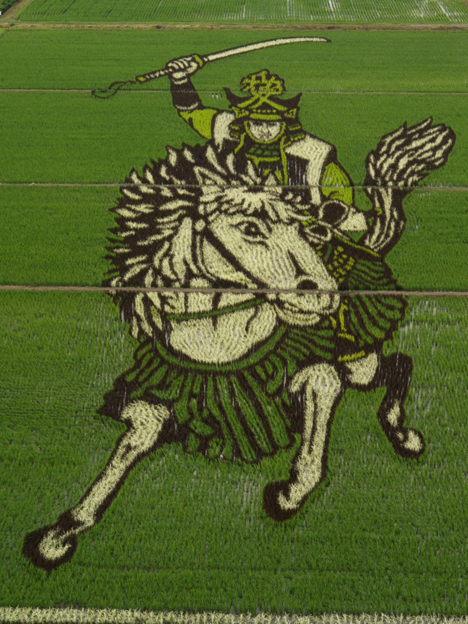
Sengoku-period warrior [Photo]
As summer progresses, crops of rice paddy art are beginning to emerge in Japan. The crop art -- created by strategically arranging and growing different colors of rice plants -- can be seen in farming communities across the country. The largest and finest work is grown in the Aomori prefecture village of Inakadate, which has earned a reputation for its agricultural artistry. This year the enormous pictures of Napoleon and a Sengoku-period warrior, both on horseback, are visible in a pair of fields adjacent to the town hall there.
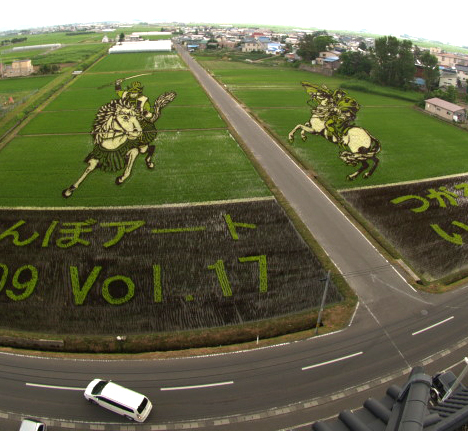
View from roof of Inakadate town hall [Photo]
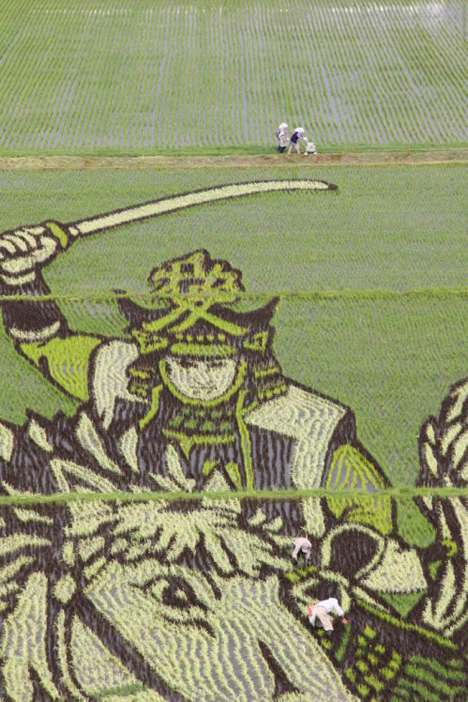
Warrior [Photo]
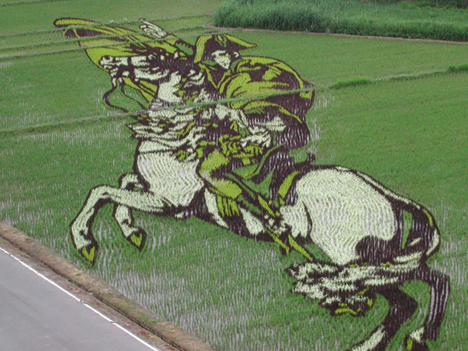
Napoleon [Photo]

View from top of warrior's head [Photo]
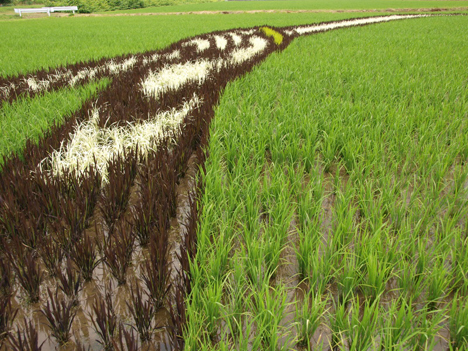
Warrior's arm [Photo]
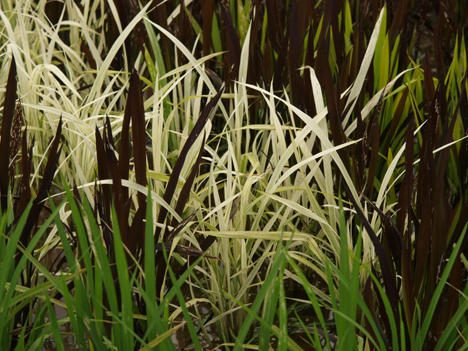
Close-up of rice plants [Photo]
* * * * *
Another relatively famous rice paddy art venue is located in the town of Yonezawa in Yamagata prefecture. This year's work depicts the 16th-century samurai Naoe Kanetsugu and his wife, Osen, whose lives are chronicled in Tenchijin, the popular, year-long historical fiction television series now airing on NHK.
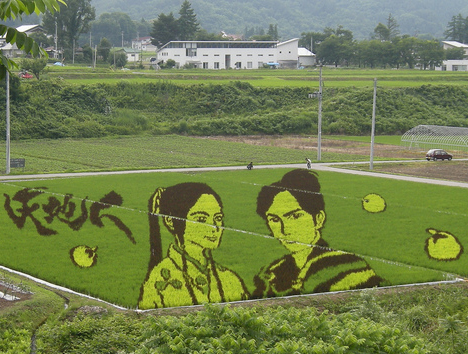
Naoe Kanetsugu and Osen [Photo: contri]
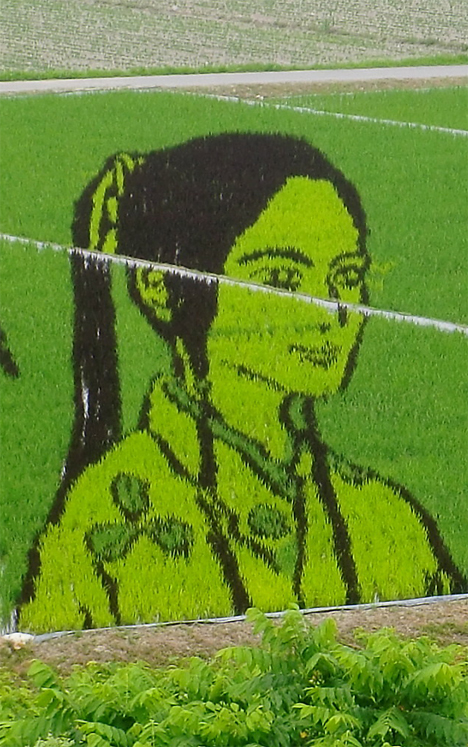
Osen [Photo]
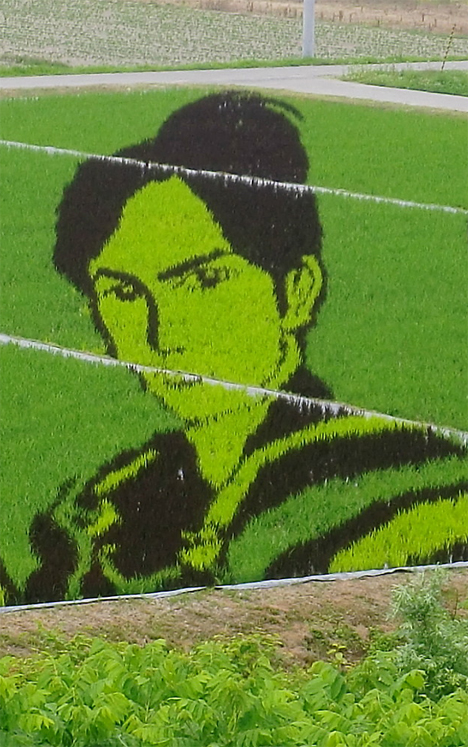
Naoe Kanetsugu [Photo]
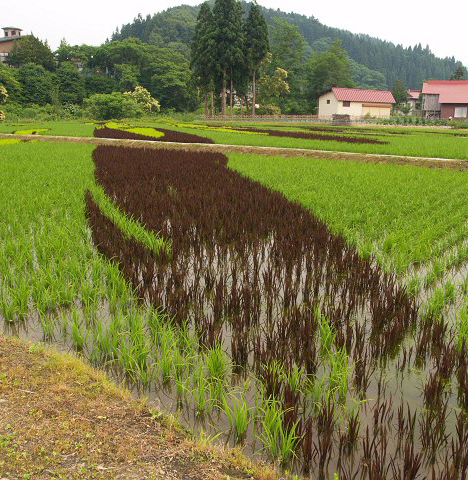
View from top of Naoe Kanetsugu's head [Photo]
* * * * *
Smaller works of crop art can be seen in other rice-farming areas of Japan. Here are a few more examples.
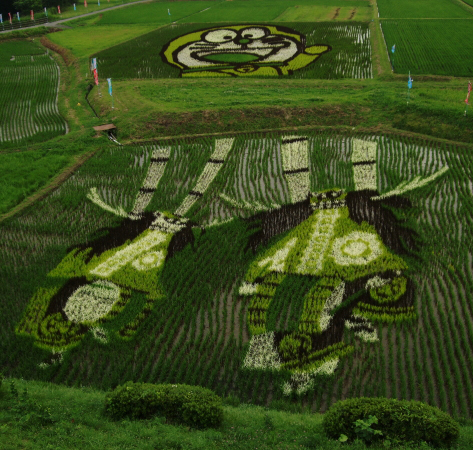
Doraemon and deer dancers (shishi-odori), location unknown [Photo]
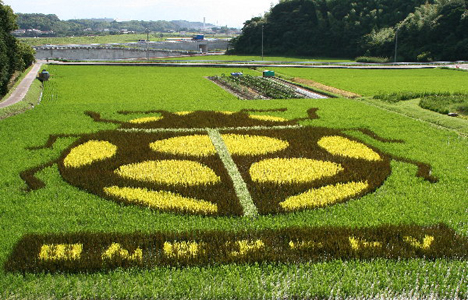
Ladybug, Nishio, Aichi prefecture [Photo]
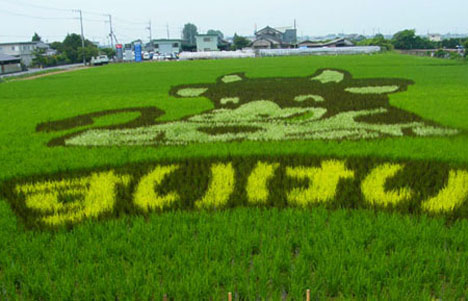
Cow, Omi-Hachiman, Shiga prefecture [Photo]
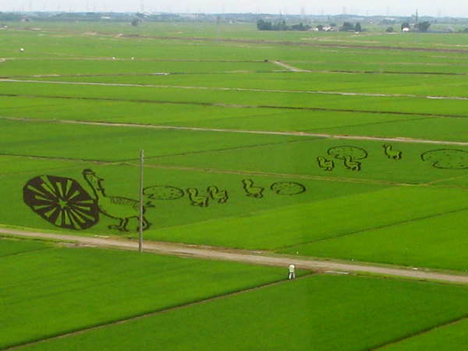
Ducks, near Fukushimagata Lagoon Water Park, Niigata prefecture [Photo]

Random Passerby
Ah, I love the ducks for some reason. Random!
[]I wish it were easier to share PT posts on Facebook--I post in URLs sometimes but I don't think anyone ever clicks on them because thumbnails never show up, and so much of the good stuff you guys post is so graphical in nature that it's not really alluring unless people can see a thumbnail. :/
Purl2007
How do they harvest the different coloured types of rice I wonder. Only the Japanese could create such precision and Art. I am trying to m ake origami cranes and origami and Ikebana are other forms of precision Art forms.
[]robot makes music
So much nicer than crop circles, so much less destructive and costly to the farmers. More than the crop circles, the droves of people who just walk out into the fields and break crops even more to get a look at things or to "test for aliens" or wtf ever they think they're doing, those people ruin farmers crops and livelyhoods.
This, on the other hand, not only discourages monocropping but is beautiful and non-destructive to the farmers fields and livelyhoods.
[]Rozarin
Great stuff. Who plots it out, the farmers?
[]karen
This takes some serious skill. Mucho props to them!
[]Melisa
Thanks for this. It's so beautiful, it made my day.
[]Lucas
More like much crops... snicker.
[]kew
How they do that?, didn't know there are white rice leaf
[]YiL
@ kew
with Photoshop!
[]Bdub
Nice artistic work.
[]Jono
OMG! Ok, I have a hard time keeping 4 tomato plants alive. This is awesome.
[]Rebecca
WOW~~So nice...
[]toomy
ART FOR RICE SAKE!
[]almariada
eh, eh, eh, ;)
[]ZiA
Wish i had known about this when I was in Japan!!
[]Sweetie
Hubby and I are going there next year.... woooot... we are gonna see this... absolutely AMAZING!!!! And NO... there is NO Photoshopping done here...
[]Tobester
I have one rice plant on my shelf in the kitchen. Is it possible to create any of these gigantic illustrations with it?
[]Jaqui
Surely you jest - you can't be serious unless you are monumentally deluded!
[]OlhoNaTV
AWESOME!
[]Regina
Very beautiful,and creative. Wish there were more agricultural artists to improve all countries while providing food as well.
[]orobourous
Isn't the Sengoku-period warrior in the first picture Kanetsugu?? His armor (esp his helmet) looks very similar to Kanetsugu's armor.
[]shiva kumar adithya
xleent creativity.......
[]Unsolved Mysteries Forum
Absolutely fantastic rice art!I always been impressed by the Japanese art.
[]Unsolved Mysteries Forum
Awesome , fantastic Japanese rice art!
[]Nageshwar
SUPERB
[]Linda
i like it....
[]it's very_2 Fantastic...
Furi Katsura
Aw GOD!
[]that's awesome!
someday I'll travel to there and see that closer X3
those pics are amazing
I never expected there were so many colors of rice plants
:3
HennaGaijin
Yes, The 'Sengoku warrior' IS Kanetsugu.
[]The other ricefield pictures of him are in Yonezawa, the 'next town over' from Yamagata city, where I live. Seeing these posted and getting attention abroad lets me feel proud of this amazing production here. But the odd thing is, I didn't see much about it at all in the local press, haven't heard it talked about at all. Strange.
We need to see more GOOD NEWS like this get attention!!
Rozi
Inspirational. It's amazing what a dream will lead to when it is followed.
[]Yoshi
Nice photos. Here is an exclusive interview for those produced Japanese rice paddy art.
[]http://thedoq.com/creativeport/en/
Monia
Japan rulez. Wonderful. I'm impressed:)
[]